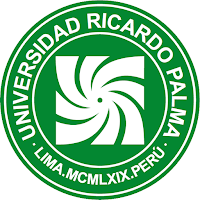Melodies of cinema: the royal pre-Talkie film performances in Caracas, 1899-1930
Melodies of cinema: the royal pre-Talkie film performances in Caracas, 1899-1930
Les mélodies du cinéma: les représentations cinématographiques régaliennes pré-talky à Caracas, 1899-1930
Main Article Content
DOI: https://doi.org/10.59885/archivoVallejo.2024.v7n13.13Abstract
Never was a film projected in absolute silence. Several musical acoustics were incorporated, at the beginning or in the middle of the screening —we ignore with what effective level of connection—, to the film show that was completely surrounded by noises from outside and inside the auditorium. At the same time, the projections made up of various films were inserted in variety programmes including ballets, comedy acts, attractions and others. The music would have the function —in Burch’s words— of combating the contamination of diegetic silence, caused by uncontrolled noises coming from outside, by the swaying of the audience in the hall, conversations, etc., replacing it with an organised sound space, a sort of «red thread stretched between the film and the spectator», in the words of Marcel L’Herbier. This work aims to initiate the practice, from the perspective of film history, of compiling the musicians and musical practices that took place in Venezuela during the years of silent cinema.
Article level metrics
Downloads
Metrics
Article Details

This work is licensed under a Creative Commons Attribution 4.0 International License.
La revista utiliza una licencia Creative Commons para mostrar a los lectores y a los usuarios cómo se pueden utilizar los contenidos publicados.
Los contenidos publicados en la revista están bajo una licencia CC-BY 4.0, la cual permite:
- Compartir, copiar y redistribuir el material en cualquier medio o formato.
- Adaptar, remezclar, transformar y construir a partir del material para cualquier propósito, incluso comercialmente.
Bajo los siguientes términos:
- Atribución. Usted debe dar crédito de manera adecuada, brindar un enlace a la licencia, e indicar si se han realizado cambios. Puede hacerlo en cualquier forma razonable, pero no de forma tal que sugiera que usted o su uso tienen el apoyo de la licenciante.
La información de licencia se muestra e incrusta en las páginas de artículos y en ficheros de texto completo como sigue:
«Este obra está bajo una licencia de Creative Commons Reconocimiento 4.0 Internacional».
Adorno, T. y Eisler, H. (1981). El cine y la música. Editorial Fundamentos.
Arrom, J. J. (1971). Presencia del negro en la poesía folklórica americana. En Certidumbre de América: estudios de letras, folklore y cultura (pp. 122-153). Gredos.
Belmonte, A. (2007, 7 de abril). Los pianistas en el cine mudo. Pasión Silente. http://pasionsilente.blogspot.com/2007/04/los-pianistasen-el-cine-mudo.html
Bendahán, D. (1990). Siete músicos venezolanos. Cuadernos Lagoven.
Bernardini, A. (2001). Cinema italiano delle origini: gli ambulanti. La Cineteca del Friuli.
Christie, I. (2001). Early phonograph culture an moving pictures. En R. Abel y R. Altman (eds.), The sounds of early cinema (pp. 3-12). Indiana University Press.
Colón, C., Infante, F. y Lombardo, M. (1997). Historia y teoría de la música en el cine: presencias afectivas. Alfar.
Chion, M. (1985). Les chiens de faïence. Protée, 13(2), 7-11.
Chion, M. (1997). La música en el cine. Paidós.
Del Cerro, Y. y Cruz, M. A. (2010). Algunos apuntes sobre la historia de la salud y educación médica venezolana. Contribuciones a las ciencias sociales, (2010-11). https://econpapers.repec.org/article/ervcoccss/y_3a2010_3ai_3a2010-11_3a20.htm
Díez, E. (2003). Historia social del cine en España. Fundamentos.
I Falcó, J. L. (1995). Parámetros para el análisis de la banda sonora musical cinematográfica. D’Art, (21), 169-186. http://usuarios.lycos.es/compositores/material2.html
Iglesias, P. (2007). De las tablas al celuloide: trasvases discursivos del teatro al cine primitivo y al cine clásico de Hollywood. Fundamentos.
Marx, H. (1988) ¡Harpo habla! Editorial Montesinos.
Matos, M. (1968). Historia de la música en el Zulia. Tipografía Cervantes.
Nava, C. (1940). Centuria cultural del Zulia. Editorial Elite.
Sandoval, J. (1997). El vitascopio: primer espectáculo cinematográfico de Venezuela. En T. Hernández (coord.), Panorama histórico del cine en Venezuela (pp. 151-178). Fundación Cinemática Nacional.
Sueiro, Y. (2007). Inicios de la exhibición cinematográfica en Caracas, 1895-1905. Fondo Editorial de Humanidades y Educación de la Universidad Central de Venezuela.
Seguin, J. C. y Sueiro, Y. (2023, 27 de agosto [última actualización]). El cinematógrafo Lumière de Giuseppe Filippi (Teatro Caracas, 26 de febrero-10 de marzo de 1889). Le Grimh. Groupe de Réflexion sur l’image Dans le Monde Hispanique. https://grimh.org/index.php?option=com_content&view=article&id=10975:18961906-ville-caracas&catid=60&Itemid=717&lang=es
Van Praag Hermanos (eds.) (1906). Directorio anual de Caracas y La Guaira 1906.
Wagner, V. (1927). Scoring a Motion Picture. Transactions of Society of Motion Picture Engineers, 10(25), 40-43.
Wierzbicki, J. E. (2008). Film Music: A History. Taylor and Francis.











